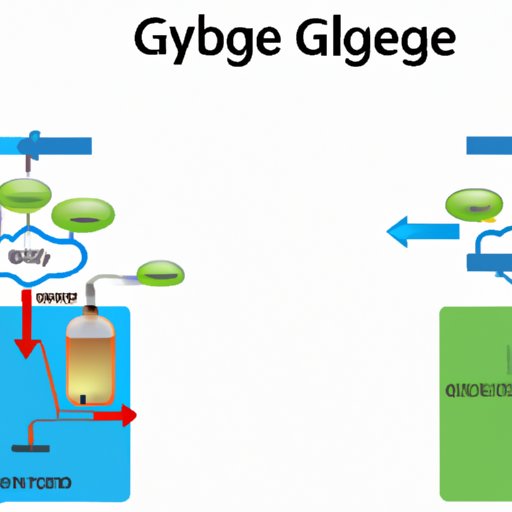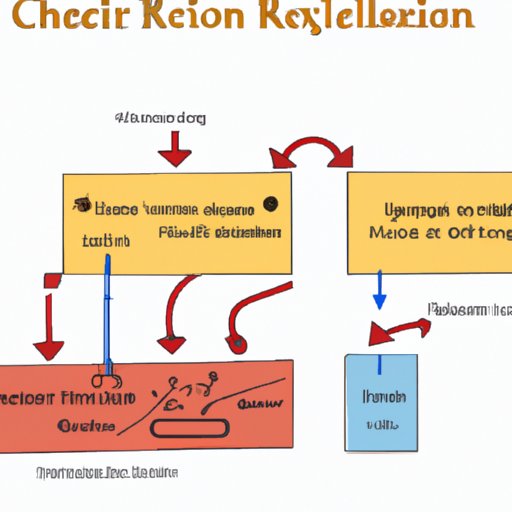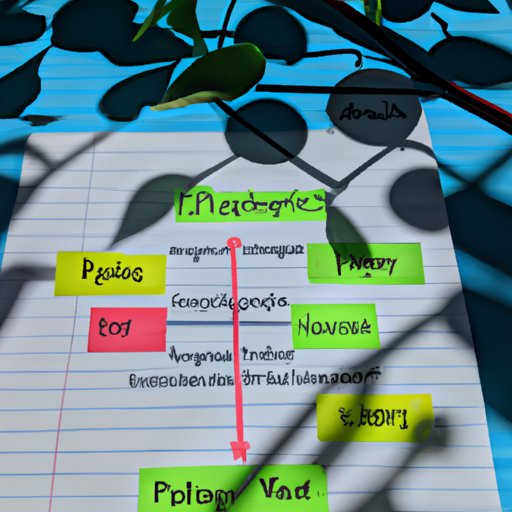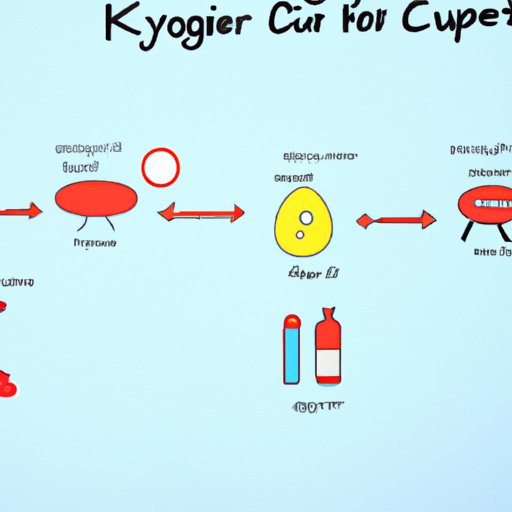Introduction
Cellular respiration is a metabolic process that converts energy from food sources into usable forms of energy for cells. It is essential for life, as it provides the energy needed for cells to carry out their functions. In simple terms, it is the process by which cells break down sugar molecules to produce energy.
Explaining the Process of Cellular Respiration in Simple Terms
Cellular respiration is a complex process, but it can be broken down into two main components: glucose and oxygen. Glucose is a type of carbohydrate found in many foods, and it serves as the source of fuel for the process. Oxygen, on the other hand, is the source of energy. The process is then divided into three stages: glycolysis, the Krebs cycle, and the electron transport chain.

The Role of Glucose and Oxygen in Cellular Respiration
Glucose is the primary source of fuel for cellular respiration. During the process, glucose is broken down into smaller molecules, releasing energy in the form of adenosine triphosphate (ATP). This ATP is then used as energy by the cell for various metabolic processes, such as growth and development.
Oxygen, on the other hand, is a necessary component of the process. While glucose is the source of fuel, oxygen is the source of energy. As oxygen is taken in by the cell, it combines with the glucose to produce carbon dioxide and water. This reaction releases energy which is then used to create ATP. Without oxygen, the process of cellular respiration cannot take place.
Examining the Three Stages of Cellular Respiration
Cellular respiration is divided into three stages: glycolysis, the Krebs cycle, and the electron transport chain. Each stage has a different role in the overall process.
Glycolysis
Glycolysis is the first stage of cellular respiration. During this stage, glucose molecules are broken down into two molecules of pyruvate. This reaction produces a small amount of ATP, as well as other molecules such as NADH.
Krebs Cycle
The second stage of cellular respiration is the Krebs cycle. During this stage, the pyruvate molecules produced in glycolysis are further broken down into carbon dioxide and other molecules. This reaction also produces a small amount of ATP, as well as other molecules such as NADH and FADH2.
Electron Transport Chain
The third and final stage of cellular respiration is the electron transport chain. During this stage, the NADH and FADH2 molecules produced in the previous stages are used to produce large amounts of ATP. This reaction also produces water as a by-product.

Breaking Down the Chemical Reactions of Cellular Respiration
Cellular respiration is a complex process, but it can be broken down into several chemical reactions. The following sections will examine each of the three stages of the process in more detail.
Glycolysis
The first stage of cellular respiration is glycolysis. This stage involves the breakdown of glucose molecules into two molecules of pyruvate. This reaction requires the input of two molecules of ATP and produces four molecules of ATP, as well as two molecules of NADH.
Krebs Cycle
The second stage of cellular respiration is the Krebs cycle. During this stage, the pyruvate molecules produced in glycolysis are further broken down into carbon dioxide and other molecules. This reaction also produces a small amount of ATP, as well as other molecules such as NADH and FADH2.
Electron Transport Chain
The third and final stage of cellular respiration is the electron transport chain. During this stage, the NADH and FADH2 molecules produced in the previous stages are used to produce large amounts of ATP. This reaction also produces water as a by-product.
Understanding the Significance of ATP in Cellular Respiration
Adenosine triphosphate (ATP) is an important molecule in cellular respiration. It is the molecule that provides the energy needed for cells to carry out their functions. ATP is produced during the process of cellular respiration, and it is used by cells for a variety of metabolic processes, such as growth and development.
ATP is produced during the process of cellular respiration in three stages: glycolysis, the Krebs cycle, and the electron transport chain. During these stages, glucose is broken down into smaller molecules, releasing energy in the form of ATP. This ATP is then used by the cell for various metabolic processes, such as growth and development.

Exploring the Link Between Photosynthesis and Cellular Respiration
Photosynthesis and cellular respiration are closely linked processes. Photosynthesis is the process by which plants use light energy to convert carbon dioxide and water into glucose and oxygen. This glucose is then used as fuel for cellular respiration, while the oxygen is released into the atmosphere.
Conversely, cellular respiration is the process by which cells break down glucose molecules to produce energy. This energy is then used by the cell for various metabolic processes, such as growth and development. The carbon dioxide produced during this process is then used by plants during photosynthesis.
Conclusion
Cellular respiration is an essential process for life, as it provides the energy needed for cells to carry out their functions. The process is divided into three stages: glycolysis, the Krebs cycle, and the electron transport chain. During these stages, glucose is broken down into smaller molecules, releasing energy in the form of ATP. This ATP is then used by the cell for various metabolic processes, such as growth and development. Additionally, photosynthesis and cellular respiration are closely linked processes, with one providing the input for the other.
In conclusion, understanding the process of cellular respiration is essential for understanding how cells obtain and use energy. By breaking down the process into its components and examining the roles of glucose and oxygen, as well as the significance of ATP, we can better understand the importance of this process in sustaining life.
(Note: Is this article not meeting your expectations? Do you have knowledge or insights to share? Unlock new opportunities and expand your reach by joining our authors team. Click Registration to join us and share your expertise with our readers.)
